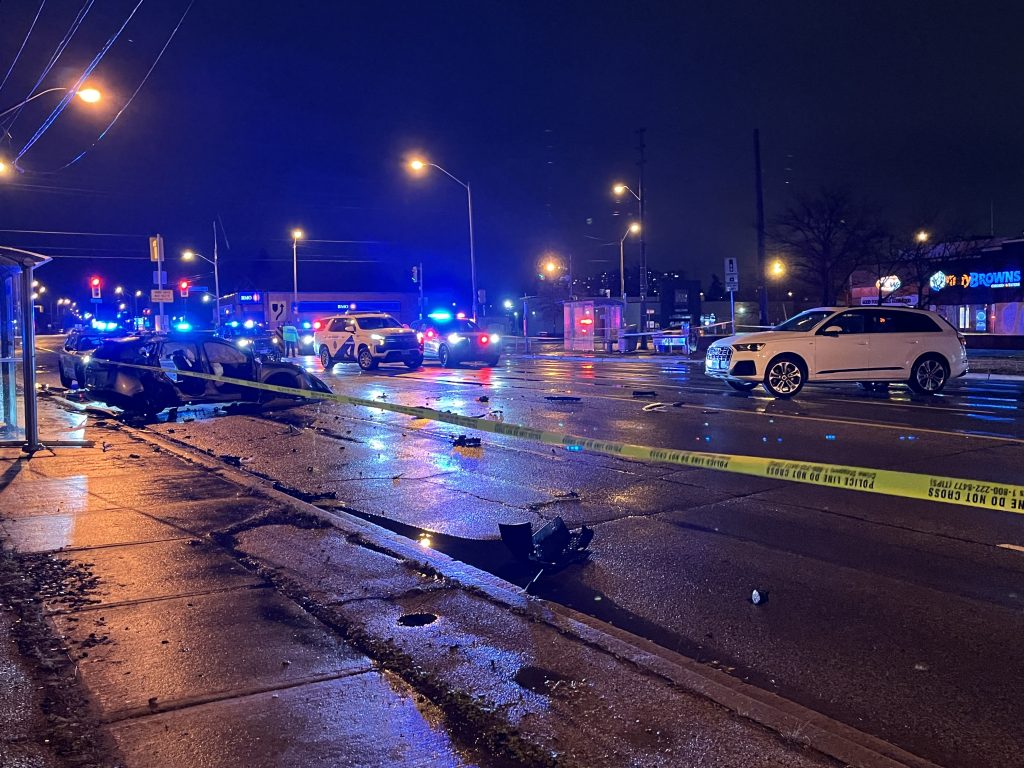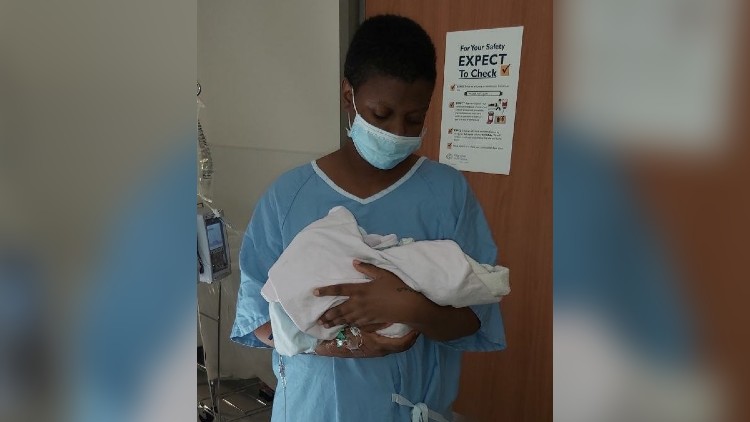TDSB student trustees: Discovering root cause of school violence is key to prevention
Posted April 14, 2023 4:45 pm.
Last Updated April 17, 2023 10:11 am.
Student trustees at the Toronto District School Board (TDSB) are highlighting what they believe to be the root cause of violence in Toronto schools, calling for holistic solutions to prevent further incidents in the communities.
Trustees Jeffrey Osaro, a Grade 12 student at North York’s Northview Heights Secondary School, Naomi Musa, a Grade 12 student at Central Toronto Academy and Indigenous trustee Isaiah Shafqat, who attends Kapapamahchakwew (Elem) Wandering Spirit School, have been speaking with students about how to improve educational environments.
The three student trustees say the impact of the COVID-19 pandemic and the subsequent isolation that ensued is being glossed over when addressing what has led to an upsurge in violence.
“[Students] lack the social skills they were supposed to learn before they came to high school or during school, and we missed out on that because of the pandemic,” explained Musa.
“So with the increase in violence, people don’t look at that aspect.”
High school plays a considerable role in socialization
Registered social worker Roxanne Francis said students on the cusp of high school during the pandemic were significantly affected by being forced to isolate.
“When the pandemic happened, these children were pulled away from each other,” said Francis. “That sense of camaraderie, togetherness, being in the same grade and grouping was lost. And when that happens, there is a loss of empathy.”
Francis said that high school plays a massive role in socialization in a youth’s teen years.

Photo: CityNews Toronto.
“There is a lot of feeling unsure of yourself, where you might fall in the world,” she continued. “Having children feeling confident, young people feeling as though they have an important place in the world — individual or family and school sector has a huge role to play in terms of socialization.”
Francis wasn’t surprised to hear about the growth in school violence when students returned from the COVID-19 pandemic, especially in institutions with fewer resources.
RELATED: Toronto to prioritize TDSB schools requiring programming, supports after recent violence
“There is something to be said for the politics around this in terms of students with more resources being able to navigate those changes in a smoother way,” said Francis.
“Wherever there are fewer resources, there’s more stress. There are more mental health challenges and more violence.”
Shafqat said students shouldn’t bare the blame for these violent incidents.
“I think the onus placed on students is unfair because they don’t know how to act. They haven’t built those social skills during those critical formative years,” he said.
At a recent trustee’s conference, Osaro said it became clear, based on a conversation with other student trustees, that Toronto isn’t the only city experiencing issues related to gang violence.
“It’s a good and bad thing because it shows that we are all having the similar occurrence of gangs being such a common cause of students having these violent outbursts in schools at times,” Osaro acknowledged.
RELATED: TDSB commits $5.9M towards mental health and well-being support for students
The three students say the key to working towards a safer environment is more staff and better-trained employees. Musa tells CityNews they have met one-on-one with students who have experienced violence in schools and made recommendations to the board.
“We did, and they listened to us… together we’ve been talking back and forth and making sure that what they’re saying is getting implemented,” said Musa.
“An increase in staff, whether teachers are more willing to understand what’s going on with students and can talk to and treat students properly. That’s top of mind.”
Student trustees pushing for holistic approach
The three trustees maintain it’s vital to understand and not criminalize the students who may be responsible for some of the violent outbursts.
“I think we need to see a holistic approach. Looking at the student as a whole rather than just their life inside of school,” said Osaro.
“Violence comes into the classroom or comes into schools because there are other factors in play, whether that be community or their home lives.”
“People want someone to be blamed so they have peace of mind. It happens all the time. Social media, [especially] in schools,” Osaro continued. “But there are many layers to our students’ problems, and having to put the blame and be like ‘case closed’ to a specific conflict doesn’t show what could have led to that situation or the layers.”
Osaro agrees that better-trained teachers will help and make a difference.
“If we train teachers and staff, which is what the TDSB is trying to do, to understand their background and where they’re coming from when situations like this, it could be de-escalated.”
Francis adds that the monitoring of students should have happened right away and not when these incidents began to rise.
“What I think would have been helpful is to keep a close eye on how our children are responding week by week, month by month, and not wait until there is this huge uptick in these behaviours before we start to say we need to get some support.”
Having the students made aware of the assistance and making sure they are accessible is of vital importance, the group agreed.
“They may not know what supports are available, or they’re afraid to ask because they think it’ll be criminalized or penalized. That isn’t the goal,” said Shafqat.
“You need to help them recover, help them heal, [and] to build a stronger, safer community for everyone.”








